The America’s Cup Event Authority received permission from World Sailing to write its own version of The Racing Rules of Sailing (the RRSAC) for the 35th America’s Cup. The goal of the RRSAC is to provide safe racing between the boats (which are sailing close to 50 mph at times on foils) and to provide a relatively simple game to understand for the viewing audience. This article explains how the RRSAC works when the boats engage each other.
Here’s what’s new:
01. The Pre-Start Entry
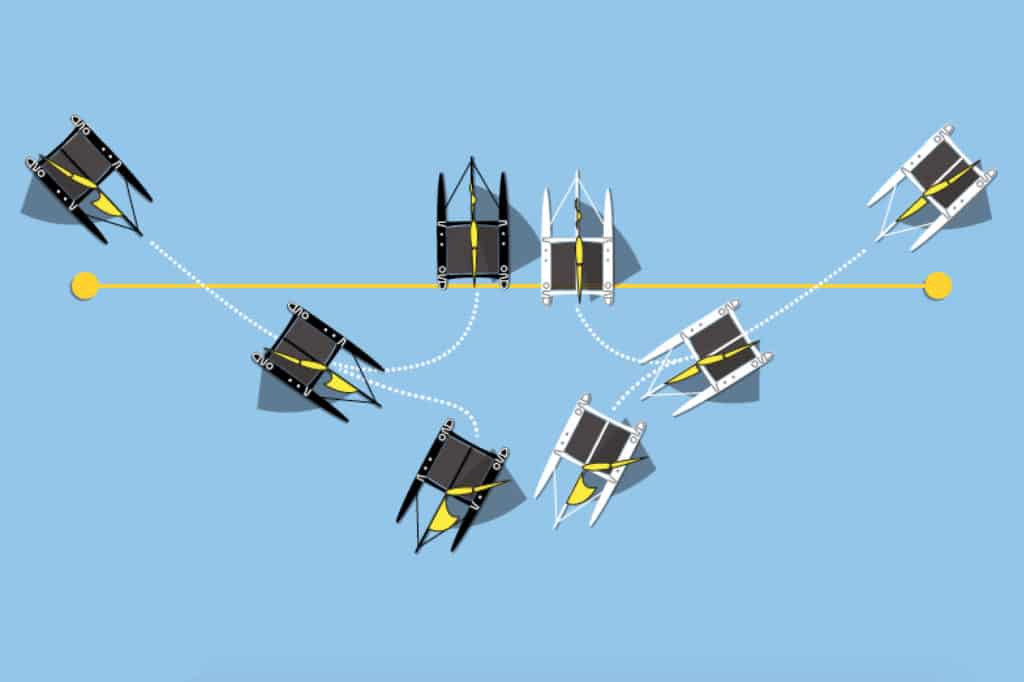
The pre-start engagement period in the America’s Cup is only two minutes. In that time, the boats will sail downwind across an entry line set perpendicular to the wind. The boat assigned the port-tack entry (P) is allowed to cross the Entry Line at 2:10 before the start; the starboard-tack boat (S) must wait until 2:00 to enter (RRSAC 27.4). Because the boats are approaching each other at closing speeds greater than 70 mph, the purpose of the early entry for P is to allow her to safely cross in front of S as she enters the starting area.
Engagement situation If P is late, or gets an unfavorable change in wind velocity or direction, she might not be able to cross S. In that case, S will aim directly at her and force her to head up and tack (a Dial Up) or bear away and jibe (a Dial Down).
The RRSAC are the same as the standard racing rules in this situation. P is required to keep clear under rule 10 (port-starboard). S, when she changes course, is required to give P room to keep clear under Rule 16.1 (changing course). The only difference is that in the RRSAC there is no rule about tacking (no Rule 13).
Therefore, the moment P passes head to wind, she is instantly the right-of-way boat under Rule 11 (windward-leeward); and, as under the standard racing rules, she is required to initially give S room to keep clear under Rule 15 (acquiring right of way).
02. Upwind Legs
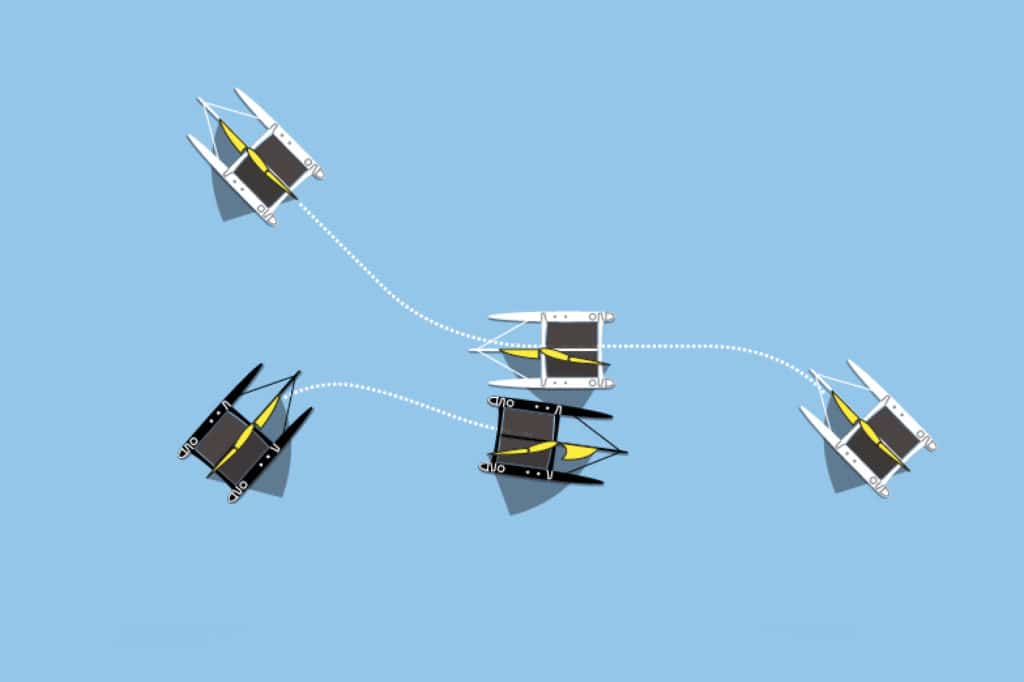
Engagement situation Under the standard racing rules, if a porttack boat (P) is bearing away to pass astern (“duck”) a starboardtack boat (S), S is not allowed to bear away (“hunt”) P when the boats are close (rule 16.2). However, in the RRSAC, S is allowed to hunt P as long as she does not bear away farther than 90 degrees from the true wind (RRSAC 16.2).
03. Downwind Legs
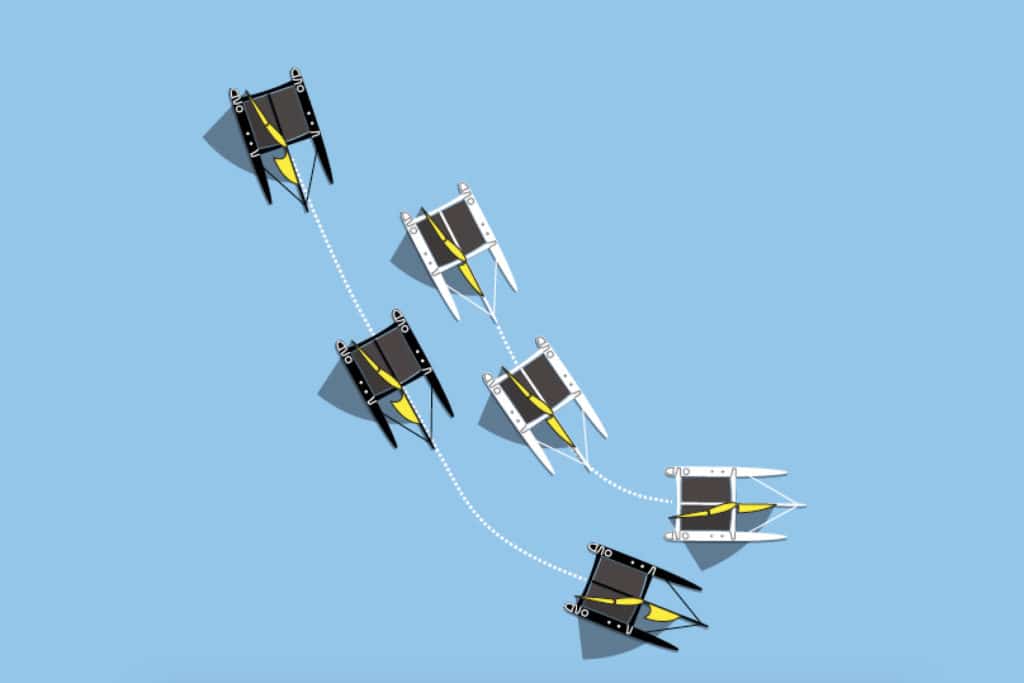
Engagement situation Under the standard racing rules, if a boat becomes overlapped to leeward of a boat that was ahead of her, she cannot sail above her proper course (Rule 17). But there is no Rule 17 in the RRSAC. Therefore, if a boat catches up from astern and overlaps the other boat to leeward, it has full luffing rights and can force the weather boat to sail as high as she wants, of course giving her room to keep clear under Rule 16.1 (changing course) when she luffs.
04. In the Boundary Zone
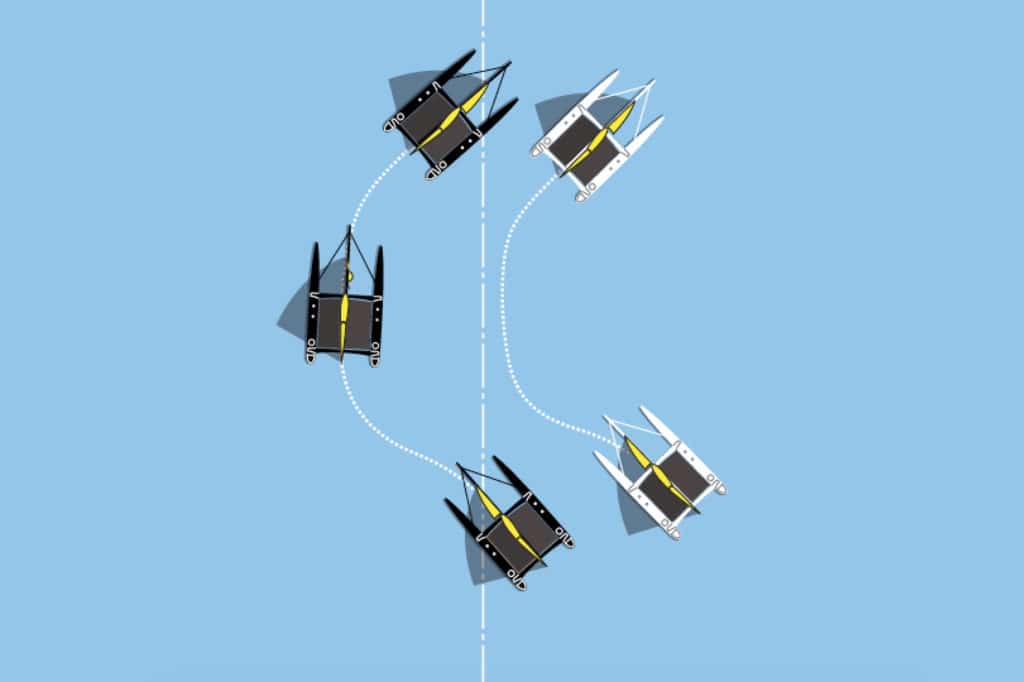
To keep the boats close to each other, the racecourse has an “electric fence,” or boundary on either side, which boats are required to stay within (RRSAC 28.3). The penalty for going out of bounds is to get back in bounds, and then slow down and lose two lengths relative to the other boat. There is a four-length zone leading up to the boundary. Lights on the boats and a display near the skipper indicate the distance to the boundary.
When a boat is in the zone of the boundary, its green light turns on. Once in the zone, a boat clear ahead or an inside boat is allowed to sail her proper course to exit the zone, and the other boat must allow her the space she needs to do so (RRSAC 20.2).
Engagement Situations
The two boats (L and W) are sailing upwind overlapped on starboard tack toward the left-hand boundary with L to leeward. When L enters the zone of the boundary, she can tack onto port tack without warning, and W must give her room to do so. However, the moment L has sailed completely out of the zone, her protection under RRSAC 20.2 turns off. So one tactic for W is to sail high and slow so that when L tacks in the zone, the boats will intersect when L has sailed out of the zone, potentially forcing L to have to tack back. This same situation will occur when L and W are sailing downwind into the zone of the right-hand boundary, with W as the inside boat with the right to jibe.
05. At the Windward Mark
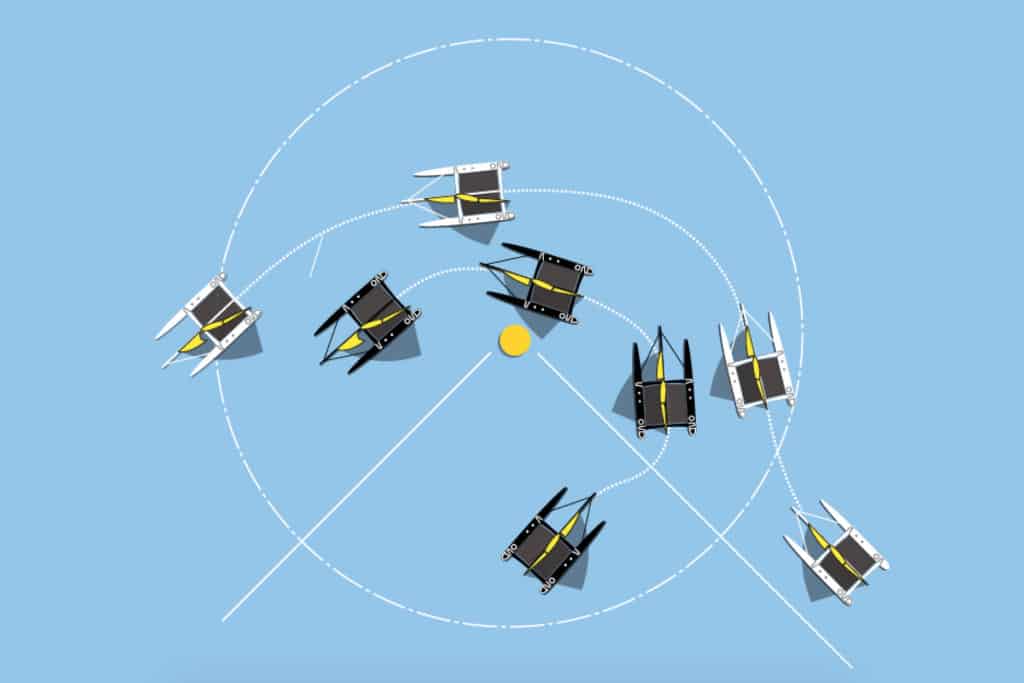
A significant difference in the RRSAC is that boats on opposite tacks on a beat to windward are considered “overlapped,” and RRSAC 18 (Mark-Room) applies at a windward mark. Also, “markroom” is room for an inside boat to sail her proper course around the mark, including tacking. In the America’s Cup, the boats pass through a windward gate, leaving the left-hand mark to port and the right-hand mark to starboard. Therefore, when P and S are in the zone of the left-hand mark, P is the inside boat, and S must give her room to tack and sail her proper course around the mark. Engagement situation The two boats (S and P) are approaching on opposite tacks and will converge in the zone of the left-hand windward gate mark. S needs to sail above the layline to the lefthand mark in case P wants to tack and round that mark. However, P has the option of ducking S and rounding the right-hand mark and picking up the starboard-tack advantage on the first meeting downwind.
The Penalty System
Basically, the penalty in the America’s Cup, including when a boat is OCS, is to slow down and get two boat lengths behind the other boat, which means put one boat length of water between the two boats (RRSAC 44.2). However, if a boat sails out of bounds or fouls a boat on a different leg of the course, the penalty is to slow down until the umpires decide the boat has lost two boat lengths in the race relative to the other boat.
To protest, the skippers will hit their “protest button.” There will be umpires following the boats on the racecourse and umpires sitting in a booth on shore. Umpires in the booth have video and graphic views of the boats, and can replay situations before making their decisions, if needed. The umpires in the booth administer the penalties by turning on a boat’s blue light. When the umpires decide the boat has fulfilled its penalty, they will turn off the blue light.
Dave Perry, the author of Understanding the Racing Rules of Sailing Through 2020 and numerous other titles, is Rules Adviser for Artemis Racing.









